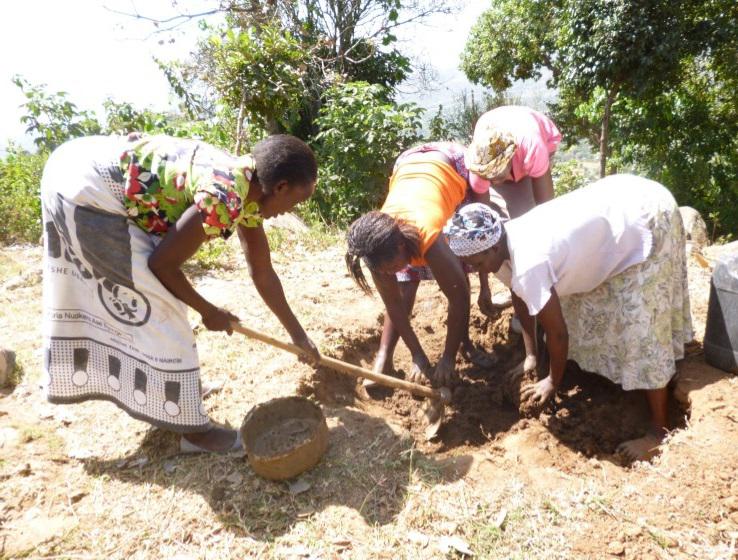Evarastus Obura
Other projects
3 Dec 2014
Integrated Action for Conservation of Dunga Kajulu Ecosystems through Enterprise Development
The aim of the project is to promote participatory involvement of upstream communities in sustainable conservation of Dunga and Nyando wetland ecosystems through enhancing upstream-downstream community cooperation for mutual gains.

Sustainable energy training; using local materials for efficient energy stoves.
Kajulu and Nyando (both upstream) and Dunga (downstream) wetlands are located in Kisumu East County. Kibos, Ombeyi and Nyamasaria rivers support upstream communities through irrigation and other domestic uses. Social-economic activities in the upstream include subsistence agriculture and deforestation for energy and housing material which also threaten the integrity of both upstream and downstream natural resources including rivers, upstream forests and soils.
Unlike in Dunga where land is mainly trust, upstream land is largely privately owned and mainly used for agriculture and settlement. The area is further endowed with underexplored resources like a rich and diverse birdlife, rich culture and a pristine terrain suitable for adventure tourism. Resources like water and land are pressured by agriculture and settlement. This is compromising both upstream and downstream ecosystems. Consequences thus include aggravation of water hyacinth situation in Lake Victoria environs, a result of poor land management and farming methods involving use of pesticides and other chemicals. Agricultural yields from these methods are however contrarily low.
Nyando area is prone to flooding which is also aggravated by the clearance of upstream vegetation. Water conflicts in the upstream are on the rise with selfish diversion of main river courses and streams gradually reducing water supply to downstream swamps thus threatening their ecological integrity.
The following objectives will guide the project goal:
i. Promote sustainable agriculture by upstream communities to help control effects of poor unsustainable farming methods on the upstream-downstream ecosystems.
ii. Promote benefit sharing from ecosystem services among upstream-downstream communities to enhance cooperation for conservation.
iii. Promote and sustain an upstream ecological rehabilitation program to minimize and eventually inhibit the current levels of environmental degradation which are compromising downstream ecological integrity.
iv. Promote awareness on importance of wetlands and forests in mitigating effects of climate change and how upstream and downstream communities can partner in their sustainable conservation.